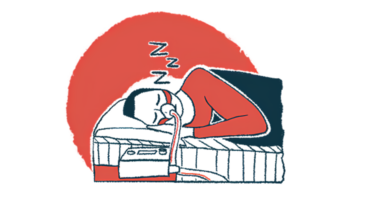Early, Sustained Growth Hormone Treatment Linked to Greater Benefits in Real-world Study

Growth hormone (GH) therapy initiated at an earlier age and sustained for a longer period results in greater improvements in growth and body composition in children with Prader-Willi syndrome (PWS), according to data from a real-world study.
These findings further support the current practice of starting GH treatment as early as possible in PWS patients, researchers said.
The study, “Outcomes in children treated with growth hormone for Prader-Willi syndrome: data from the ANSWER Program® and NordiNet® International Outcome Study,” was published in the International Journal of Pediatric Endocrinology.
More than half of infants and children with PWS are estimated to have or will have GH deficiency, impairing normal height gain during puberty and resulting in a short stature as adults.
Notably, reduced growth can be observed prenatally and is sustained through infancy.
As such, GH therapy is currently recommended for PWS patients to improve stature, metabolism, and muscle mass, while also lowering the excessive weight gain that also characterizes the condition.
Now, researchers at Novo Nordisk, along with colleagues in the U.S. and France, assessed the impact of GH therapy on the height and body mass index (BMI) of PWS patients in the real-world, clinical setting.
They looked at data from two Novo Nordisk-sponsored observational studies: the ANSWER study (NCT01009905) in the U.S. and the NordiNet International Outcome Study (NCT00960128) in other countries.
These registries were designed to assess the clinical outcomes of treatment with Norditropin (somatropin, Novo Nordisk’s GH therapy) in children and adults with growth disorders in the real-world setting.
From nearly 40,000 patients enrolled in these studies, 145 children and adolescents with PWS, who initiated GH treatment with Norditropin between 2006 and 2016, were included in the current study.
Treatment, given at a mean dose of 0.03 mg/kg per day, was started at a mean age of 4.4 to 5.6 years. Patients were followed for a median of about 2.5 years, ranging up to nearly four years.
Standard deviation scores (SDS) were calculated for patients’ height and BMI, and variables affecting these SDS were assessed. SDS scores reflect the variation from an average value of children of the same age and sex.
Based on the availability of follow-up data, 129 patients were included in the height analysis and 98 in the BMI analysis.
Results showed that both the age at which patients started Norditropin and how long they stayed on treatment significantly influenced their height, while only treatment duration had a significant impact on BMI.
Notably, “earlier treatment resulted in a greater gain in height, and a longer treatment period resulted in better outcomes for both height and BMI” in children and adolescents with PWS, the researchers wrote.
In addition, patients with a higher BMI at treatment start showed a greater drop in BMI over time.
Interestingly, opposing trends in initial BMI SDS changes were obtained for patients in the different studies, with those in the ANSWER study showing a decrease, and those in NordiNet showing an increase.
Since PWS patients typically follow a series of age-dependent nutritional phases, “an increase or a decrease in BMI SDS could be considered an improvement, depending on the patient’s age and nutritional stage,” the scientists wrote.
The trend discrepancies may be explained by the fact that patients in the ANSWER registry were about six years older (median age 8 versus 2) and had higher BMI than those in the NordiNet study, the team said.
Many of these older patients were likely on the insatiable, food-seeking phase of the disorder, and a decrease in BMI would represent an improvement. In turn, for younger patients, a BMI increase would likely reflect growth improvements.
“The continued improvements over 4 years are consistent with previous studies demonstrating ongoing improvements in growth for up to 15 years of GH therapy,” the team wrote.
Regarding safety, eight non-serious adverse events were reported in six patients from the ANSWER study, and three non-serious and five serious side effects were seen (in three patients each) from the NordiNet registry. Serious side effects included diabetes and scoliosis (a sideways curvature of the spine).
Two patients died during the studies, but their deaths were considered unlikely to be related to Norditropin.
“In conclusion, GH was confirmed to be effective in the management of children with PWS,” the researchers wrote, adding that their study “supports early initiation and sustained use of GH therapy in patients with PWS.”






